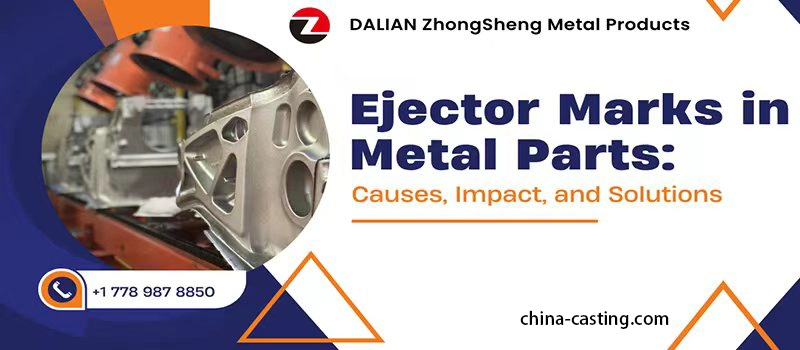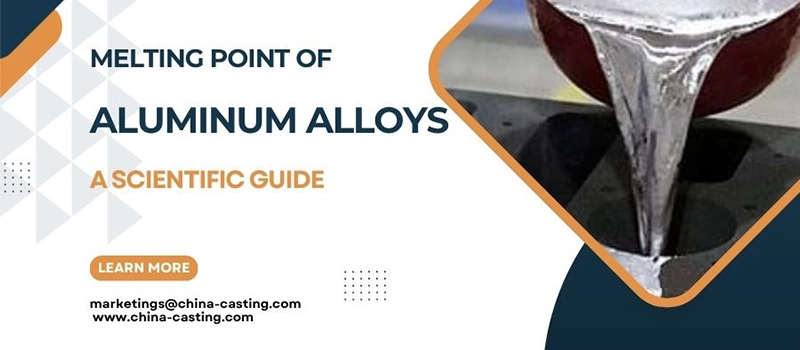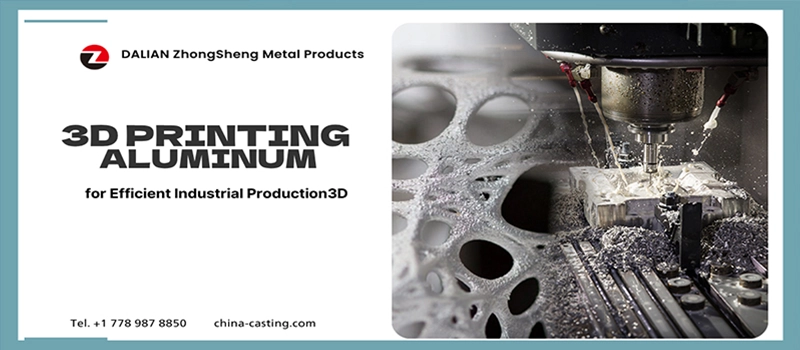Are you struggling to understand the difference between laser etching vs engraving? Not sure whether laser etching vs engraving is the right method for your metal parts? Confused by terms like laser etch vs laser engrave, or wondering if laser etched vs engraved parts offer better durability, speed, or finish? You’re not alone—this is a common problem faced by engineers, buyers, and manufacturers alike.
Choosing the wrong method between engraving vs laser etching can lead to serious production issues. You might get faded marks that don’t survive harsh environments, or spend more than necessary on deep engraving when etching would have been enough. In large-scale manufacturing, even small marking errors can result in delays, compliance failures, or costly rework. Without a clear understanding of laser engraving vs etching, it’s easy to waste time, money, and materials.
In this article, I’ll walk you through everything you need to know about laser etching vs engraving. I’ll explain how each process works, compare their strengths and weaknesses, show how different materials react, and introduce the laser technologies behind them. Whether you’re evaluating laser marking vs engraving vs etching, or trying to choose the best method for your production line, this guide will give you the clarity and confidence to make the right decision.
What is Laser Etching?
Definition and Technical Concept
Laser etching is a surface-level marking process that uses a high-energy laser beam to melt a thin layer of material on the surface without cutting into it. Unlike traditional engraving, which removes material, laser etching simply alters the surface by creating a shallow melted mark that re-solidifies with a different texture or reflectivity. In the context of laser etching vs engraving, etching is often preferred when fast, high-contrast marking is needed on thin or coated parts.
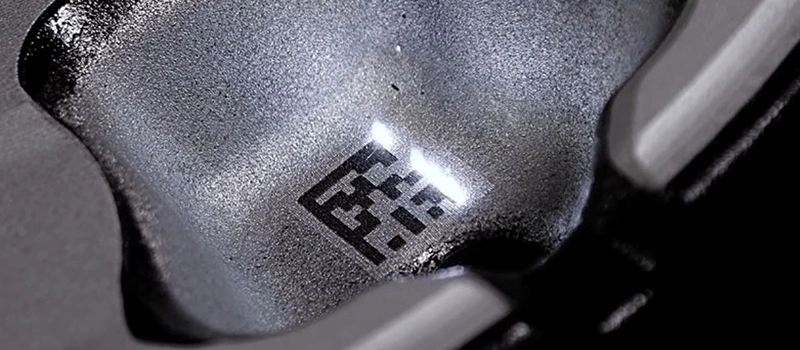
How the Laser Etching Process Works
In laser etching, a laser—most commonly a fiber laser or sometimes a CO₂ laser—is directed at the surface of the metal or plastic. The focused energy heats the surface rapidly, causing it to melt to a very shallow depth, typically between 0.001 to 0.005 inches. This quick melting and cooling process creates a visible change in color or texture, but does not remove any material. The key technical characteristic here is that etching modifies the surface instead of removing it.
Etching works best with materials that respond well to localized heating and oxidation. Because of the shallow interaction, it’s suitable for marking barcodes, logos, or data matrix codes on parts that can’t be physically altered. The process is non-contact, non-mechanical, and extremely fast, making it ideal for high-throughput environments.
What is Laser Engraving?
Definition and Technical Concept
Laser engraving is a precision marking method that uses a concentrated laser beam to physically remove material from a surface, creating deep, permanent marks. Unlike laser etching, which only melts the surface layer, engraving vaporizes or displaces the material, forming recessed patterns, text, or graphics. In any discussion of laser etching vs engraving, engraving is defined by its ability to penetrate below the surface, resulting in high-durability marks ideal for harsh industrial environments.
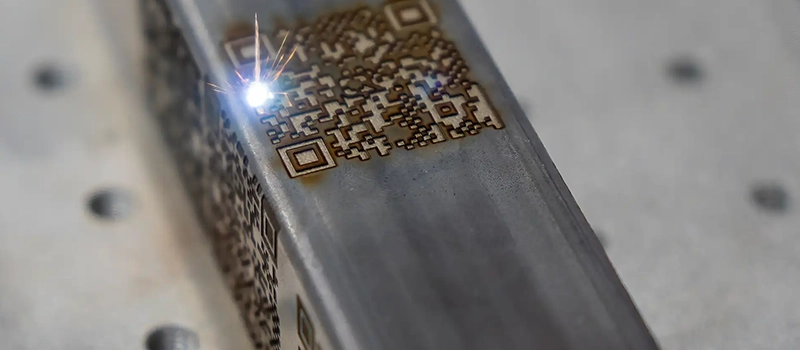
How the Laser Engraving Process Works
The engraving process begins when a high-powered laser beam—commonly a fiber or CO₂ laser—is tightly focused on the surface of the material. The intense energy raises the material’s temperature beyond its vaporization point, which can exceed 2,000°C depending on the material. As the laser traces the programmed path, it removes material through sublimation or melting and displacement, leaving behind a carved groove or cavity.
The depth of a typical laser engraving ranges from 0.005 to over 0.020 inches, depending on the laser power, pulse frequency, and material type. The beam’s motion is controlled via CNC or galvo-based systems, allowing for precision even in complex shapes or fine details. In the context of laser etching vs engraving, this deeper, more aggressive approach makes engraving ideal for permanent identification, tooling, mold marking, and any situation where longevity and physical resistance are required.
Types of Laser Technologies Used
Understanding the Core Laser Systems Behind Marking Processes
In any discussion of laser etching vs engraving, it’s critical to understand that both processes rely on specific types of laser sources—each with distinct characteristics in terms of wavelength, power, precision, and cost. The three most common laser types used in metal marking are fiber lasers, CO₂ lasers, and UV lasers. Each one interacts differently with various materials, which determines whether it is better suited for etching or engraving.
Fiber Lasers: Precision and Power for Metals
Fiber lasers are the most common laser source used in both etching and engraving, particularly for metals. Operating at a wavelength of 1064 nm, fiber lasers deliver high energy density and excellent beam quality, allowing them to focus sharply and work efficiently with conductive materials like stainless steel, aluminum, brass, copper, and titanium.
In laser etching vs engraving applications, fiber lasers are often the go-to choice for:
- Laser engraving on metals where depth and permanence are needed
- Laser etching on anodized aluminum or thin parts where high-speed marking is critical
Fiber lasers are valued for their low maintenance, high reliability, and adaptability across a wide range of industrial applications.
CO₂ Lasers: Best for Non-Metals and Surface Etching
CO₂ lasers operate at a much longer wavelength (10,600 nm), which is highly effective for cutting or marking non-metallic materials such as plastics, wood, glass, rubber, paper, and some coated metals. While CO₂ lasers are less effective on bare metals without special additives, they are commonly used in laser etch vs laser engrave decisions involving non-metal applications.
In the context of etching:
- CO₂ lasers are ideal for surface-level etching on coated metals or painted surfaces
- They’re also widely used for non-metal components in electronics, packaging, and labeling
Due to their longer wavelength, they require more power to process metals and are less precise on small or highly reflective surfaces compared to fiber lasers.
UV Lasers: Ultra-Fine Marking for Sensitive Materials
UV (ultraviolet) lasers operate at a wavelength of around 355 nm and are used for cold marking—meaning they transfer less heat to the surface, which reduces material distortion. UV lasers are ideal for marking very fine features on materials sensitive to thermal stress, such as plastics, medical components, and glass.
While UV lasers are less common in heavy industrial metalwork, they are extremely useful when:
- High-resolution logos or text must be etched on delicate parts
- Heat damage must be minimized (e.g., electronics, medical devices)
In terms of laser engraving vs etching, UV lasers lean heavily toward etching, not engraving, due to their shallow penetration and low thermal impact.
Laser Etching vs Engraving: Key Differences
Understanding the real difference between laser etching vs engraving is critical when choosing a laser marking method for your industrial parts. While both are considered permanent laser marking techniques, the depth, durability, heat impact, material removal, and production speed are all very different. If you’ve ever wondered laser etching vs engraving—or even laser etching vs engraving—this section breaks down the most important factors that separate these two technologies.

Material Removal and Marking Depth
One of the biggest differences in the debate of laser etching vs engraving lies in how much material is removed from the surface.
- Laser engraving removes material. It vaporizes or displaces the substrate, cutting deep grooves into the surface—typically 0.005” to 0.020” deep, and in some cases even more. The deeper the engraving, the more durable and abrasion-resistant the mark becomes.
- Laser etching, on the other hand, does not remove material. Instead, it melts or oxidizes a thin layer of the surface—usually between 0.001” and 0.005” in depth. That means less structural impact but also less durability.
In the comparison of laser etching vs engraving, engraving always wins in terms of mark permanence and physical resistance. However, laser etching provides a faster, less invasive option for surface-sensitive applications.
Durability and Environmental Resistance
Durability is another key factor in laser etching vs laser engraving decision-making.
- Engraved parts can withstand heavy use, chemical exposure, and abrasion. That’s why laser engraving is preferred for components used in harsh environments, such as tools, molds, and equipment used in mining, agriculture, or automotive systems.
- Etched parts have lower abrasion resistance. They hold up well under normal conditions but may degrade faster if exposed to friction, solvents, or outdoor wear.
So if your project requires a mark that will last for years under extreme conditions, engraving vs laser etching is the clear winner. But if you just need traceability or branding on indoor-use parts, etching may be more than enough.
Speed and Production Efficiency
In high-volume production, marking speed matters—and this is where laser etching vs engraving diverges significantly.
- Laser etching is generally much faster than engraving. Since it only modifies the surface, each part requires less laser dwell time, which increases throughput.
- Laser engraving, because it must vaporize and remove material, takes longer per unit—especially for deeper or more complex designs.
If your priority is speed and cycle time, such as in automated manufacturing lines or barcode serialization, laser etching is often the smarter choice. For this reason, many manufacturers using laser marking vs engraving vs etching in production prioritize etching for time-sensitive operations.
Appearance and Surface Finish
The visual appearance of the mark also differs between laser etching vs engraving.
- Laser etching typically creates high-contrast marks, especially on anodized aluminum or coated metals. Because it oxidizes or melts the surface, the result is often a dark, crisp mark that’s easily readable—even by machines.
- Laser engraving creates deeper but lower-contrast marks, depending on the material. You may need post-processing (like painting or inking) to make engravings stand out visibly.
So in scenarios where scannability, contrast, or aesthetics matter—like part labeling or logo branding—laser etching might offer better visual results. On the other hand, if visibility is secondary to mechanical durability, engraving is the better fit.
Thermal Impact and Part Integrity
When comparing laser etching vs engraving, it’s important to consider how much heat is introduced to the part.
- Laser engraving applies more intense heat over a longer time to vaporize material, which can warp thin metals or damage coatings. On small or delicate parts, this may compromise structural integrity.
- Laser etching, being faster and shallower, generates lower heat. That makes it a safer option for thin-walled, precision, or heat-sensitive components.
This is a crucial difference in laser etching vs engraving, especially when working with thin metal housings, medical parts, or electronics where heat distortion must be avoided.
Cost per Part and Operational Efficiency
Finally, let’s talk money—an important factor in the laser etching vs engraving decision.
- Laser etching is typically less expensive per part. It uses less power, has shorter marking cycles, and causes less wear on the laser system.
- Laser engraving, because it demands more energy, longer processing time, and often higher-powered systems, is more expensive, especially in large-scale runs.
If your operation is focused on volume and cost control, laser etching is usually more economical. However, when factoring in mark longevity and rework reduction, engraving can pay off in the long run—particularly in demanding industries.
Pros and Cons of Each Method
In the ongoing comparison of laser etching vs engraving, both processes offer distinct advantages depending on the application, material, and desired results.
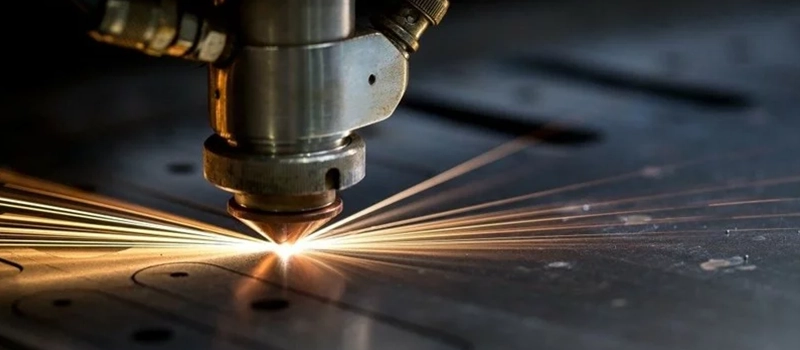
Pros of Laser Etching
✅ Fast, High-Throughput Performance
Laser etching is significantly faster than engraving. It requires less energy and time per mark, making it ideal for high-volume production lines.
✅ Minimal Surface Damage
Since etching only melts a shallow layer of material, it causes little to no structural damage. This makes it a preferred option for thin-walled or delicate parts.
✅ Excellent Visual Contrast
Etched marks, especially on anodized or coated metals, offer high visibility and sharp contrast—perfect for logos, serial numbers, or QR codes that must be easily scannable.
✅ Lower Per-Part Cost
Etching consumes less power, takes less time, and causes less wear on equipment. That translates to lower operational costs for mass production environments.
Cons of Laser Etching
❌ Lower Durability
Etched marks are more vulnerable to abrasion, friction, or harsh environments. Over time, exposure can cause marks to fade or degrade—especially on moving parts or tools.
❌ Not Suitable for Structural Marking
When physical depth is required—like in stamping dies or tool components—etching simply can’t deliver. It lacks the material removal capacity needed for mechanically critical markings.
❌ Limited to Certain Materials
Laser etching works best on specific surface-treated metals like anodized aluminum or coated steels. It’s less effective on raw, untreated, or high-hardness materials.
Pros of Laser Engraving
✅ Superior Mark Longevity
Laser engraving creates deep, permanent marks that last under high-stress conditions—resisting friction, chemicals, and extreme temperatures.
✅ Ideal for Harsh Environments
Engraved marks perform exceptionally well in industries like automotive, mining, aerospace, or petrochemical, where parts must survive rugged conditions.
✅ Broad Material Compatibility
Laser engraving works on a wide range of metals and alloys, including hardened steel, brass, copper, titanium, and more. It’s a reliable choice for most industrial metals.
✅ Versatile Use Cases
From mold cavity IDs to precision tools and equipment plates, engraving is the go-to for applications requiring traceable, tamper-proof identification.
Cons of Laser Engraving
❌ Slower Processing Time
Because it removes material, engraving is slower and requires more laser energy. This can reduce overall production efficiency in fast-paced workflows.
❌ Higher Power and Equipment Demands
Engraving typically demands higher-powered fiber lasers, increasing both equipment investment and energy costs. This may not be economical for basic marking needs.
❌ Risk of Heat Distortion
Deep laser penetration generates significant heat. On thin or heat-sensitive parts, this may cause warping, surface deformation, or thermal discoloration.
Both laser etching vs engraving serve essential roles in industrial marking. The right choice depends entirely on what you’re trying to achieve: speed, cost, appearance, or permanence. In some cases, you may even need both technologies running side-by-side in your production workflow.
Material Compatibility: Which Metals Work Best?
In the real-world application of laser etching vs engraving, not all materials behave the same. Some metals respond beautifully to surface etching with high-contrast marks, while others require deep engraving to ensure legibility and longevity. If you’re deciding between laser engraving vs etching, understanding the relationship between material properties and marking performance is absolutely critical.
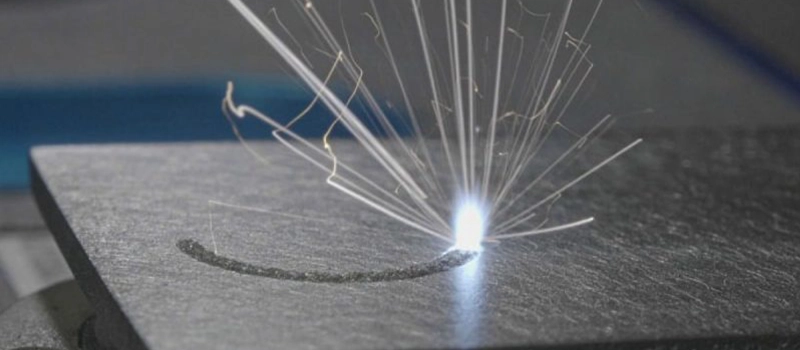
Stainless Steel
Etching:
Laser etching on stainless steel produces crisp, dark, and readable marks due to the alloy’s natural oxide-forming properties. It’s perfect for part numbers, data matrices, and barcodes. Etching also preserves the corrosion resistance of the material since it doesn’t break through the protective surface.
Engraving:
Laser engraving is ideal for parts requiring permanent marks in harsh conditions (e.g., food processing tools, medical devices). Deep engraving into stainless steel creates long-lasting marks that resist heat, chemicals, and friction.
✅ Verdict: Both laser etching vs engraving work well on stainless steel, depending on the depth and durability needed.
Aluminum (Including Anodized Aluminum)
Etching:
Anodized aluminum is one of the best materials for laser etching. The anodized layer reacts to the laser with high contrast, producing sharp black or white marks. Etching does not remove the protective layer, which is key for decorative or functional parts.
Engraving:
Bare aluminum can be engraved, but the contrast is low unless color-filled afterward. Also, engraving may damage thin aluminum sheets or coated surfaces.
✅ Verdict: Laser etching is preferred, especially for anodized aluminum in consumer electronics, nameplates, and panels.
Carbon Steel
Etching:
Etching carbon steel is possible, but the contrast is often lower unless surface-treated or coated. Oxidation may create uneven coloring, and marks may fade over time under heavy use.
Engraving:
Laser engraving on carbon steel produces deep, rugged marks that survive abrasion and corrosion. It’s ideal for automotive, industrial tools, and structural components.
✅ Verdict: Engraving is the better choice for carbon steel in most applications.
Brass and Copper
Etching:
These metals have high reflectivity and thermal conductivity, which can make laser etching less effective. Marks may be faint, blurry, or inconsistent—especially on raw surfaces.
Engraving:
Engraving works better here. With sufficient power, a fiber laser can engrave copper and brass for durable identification and decorative marking.
✅ Verdict: Use laser engraving for brass and copper; etching is not recommended without surface prep or coating.
Titanium
Etching:
Titanium reacts well to etching, creating colorful oxide layers depending on the laser settings. It’s common in medical, aerospace, and military applications where marking must not compromise structural integrity.
Engraving:
Laser engraving is also effective for titanium but generates more heat and may require caution when working with thin parts.
✅ Verdict: Laser etching is preferred when aesthetics and part integrity matter; engraving for deeper, more durable marks.
Zinc and Zinc-Alloy Castings
Etching:
Zinc alloys can be etched but often require optimized parameters to avoid melting or overburn. Surface oxidation can also reduce clarity.
Engraving:
Zinc’s low melting point makes it tricky for deep engraving, especially in high-speed production. Engraving must be carefully controlled to avoid burrs or part deformation.
✅ Verdict: Laser etching is safer and more efficient for marking zinc-based parts.
When evaluating laser etching vs engraving decisions, always consider the material’s reflectivity, hardness, heat tolerance, and coating. These factors directly affect how the laser interacts with the surface and whether laser etching vs engraving will give you optimal results.
Common Applications in Metal Fabrication
Laser marking has become a vital part of modern metal manufacturing, especially in high-precision, high-volume production. Whether using laser etching vs engraving, manufacturers rely on these processes to improve product traceability, compliance, quality control, and brand identity. In the ongoing comparison of laser etching vs engraving, understanding where each method fits in the production line is key to maximizing efficiency and performance.
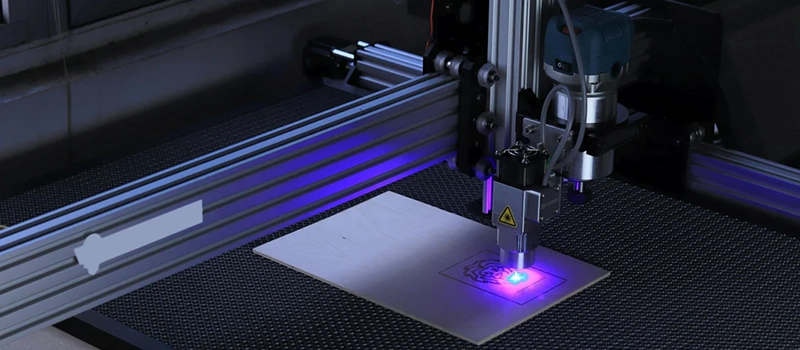
Identification and Traceability
Etching for Fast, High-Contrast ID
In industries where parts need to be tracked across production stages or through distribution, laser etching is often used to mark:
- Serial numbers
- Barcodes
- QR codes
- Batch numbers
- Production timestamps
Because etching is fast and creates high-contrast, machine-readable marks, it’s ideal for components that pass through automated scanners or quality systems. Examples include control panels, precision brackets, electronic housings, or engine labels.
Engraving for Long-Term Asset Tracking
For high-value or mission-critical components, engraving is used to create permanent identification that can’t be erased or worn off. This is common in:
- Tool bodies
- Dies and molds
- Industrial machinery parts
- Aerospace brackets
- Military-grade components
In the context of laser etching vs engraving, engraved marks are chosen when traceability must last the product’s full service life—even in extreme operating environments.
Compliance and Certification Marking
Why Laser Engraving Is Often Required
In regulated industries like aerospace, medical devices, and oil & gas, product markings must meet strict standards for depth, permanence, and legibility. Standards like:
- UID (Unique Identification) for defense
- ISO/ANSI marking depth requirements
- FDA traceability codes
- CE / RoHS / UL logos
In these cases, laser engraving is often mandated to ensure that marks remain readable even after years of use, coating, or sterilization. Failure to meet compliance standards due to shallow marks from etching could lead to legal penalties or rejected parts.
Branding and Aesthetic Marking
Etching for Clean Visual Presentation
When it comes to adding logos, labels, product names, or even customer branding, laser etching is usually preferred due to its clean appearance. Since etching doesn’t disrupt the surface texture, it’s ideal for parts that are consumer-facing or cosmetically sensitive, like:
- Decorative metal panels
- High-end tools
- Industrial nameplates
- Custom fittings
- Automotive interiors
In the laser etching vs engraving comparison, etched logos offer better contrast and smoother finish, especially on anodized aluminum or coated steel.
Durable Marking on Harsh-Use Components
Engraving for Heavy-Duty Applications
In sectors like mining, construction, and agriculture, equipment is constantly exposed to:
- Abrasion
- Impact
- Dirt and chemicals
- Outdoor weather
On these components, laser engraving ensures that markings don’t fade or disappear, even when the part surface wears down. Examples include:
- Gear housings
- Hydraulic cylinders
- Shafts and bearings
- Blades, drills, or buckets
In comparing laser etching vs engraving, only engraving can deliver the depth and durability needed for long-term field reliability.
Production Integration in the Factory Workflow
Etching for Speed
Laser etching is easily integrated into high-speed, automated lines, especially for light-duty or fast-moving parts. It pairs well with robotic arms, conveyor-based systems, or galvo-based scanners.
Engraving for Customization
Laser engraving is commonly used in post-processing stations, where individual parts receive custom IDs or specs before final assembly or shipping.
From nameplates to machine housings and certified components, both laser etching vs engraving play crucial roles in modern metal fabrication. Selecting the right method ensures the performance, compliance, and professional finish of your industrial parts.
Common Questions About Laser Etching vs Engraving
Even after comparing both processes in detail, many engineers, designers, and procurement specialists still have questions about the differences between laser etching vs engraving. To help you decide which method fits your manufacturing needs, here are the most frequently asked questions—and clear answers—from real-world industrial experience.
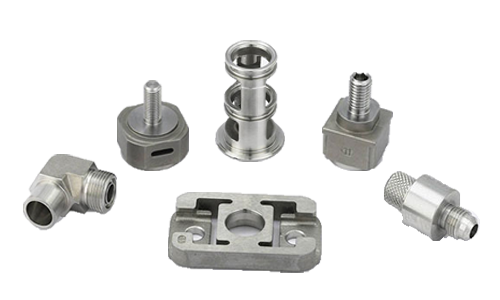
Get a quote now!
Q1: What’s the difference between laser etching vs engraving?
This question lies at the heart of every buyer’s confusion.
Laser etching works by melting and re-solidifying the surface to form a shallow, high-contrast mark without removing material.
Laser engraving, however, vaporizes or displaces material, cutting deep grooves into the surface for permanent, long-lasting identification.
In simple terms, laser etching vs engraving can be summarized as surface change vs material removal. Etching is faster and gentler; engraving is slower but far more durable.
Q2: Which process produces longer-lasting marks?
Laser engraving is the clear winner for longevity and abrasion resistance. The engraved cavity resists wear, solvents, and corrosion, even in outdoor or industrial environments.
Laser etching marks remain visible but may fade under heavy use or friction. For safety-critical parts, tool identification, or equipment labels, engraving ensures a lifetime mark.
Q3: Which method is faster for high-volume production?
If your goal is speed and efficiency, laser etching is significantly faster than engraving. Because it doesn’t cut into the surface, etching can mark thousands of parts per hour with consistent results.
Many factories choose etching for serial numbers, barcodes, and branding where deep penetration isn’t required.
When comparing laser etching vs engraving, etching typically wins in production speed and throughput.
Q4: Is laser etching cheaper than engraving?
Yes. In most production environments, laser etching is more cost-effective per part because it consumes less energy and requires shorter cycle times.
However, engraving’s deeper mark often saves money long-term by avoiding rework or fading.
When evaluating laser etching vs engraving, always weigh initial speed and cost against mark durability and lifetime value.
Q5: Which materials are best for each process?
Here’s a quick reference:
- Best for Laser Etching: Stainless steel, anodized aluminum, coated or plated metals, thin parts
- Best for Laser Engraving: Carbon steel, brass, copper, titanium, hardened alloys
If you’re working with highly reflective metals like brass or copper, engraving is safer and more consistent. For coated or heat-sensitive parts, etching is faster and cleaner.
Q6: Can one laser machine perform both laser etching vs engraving?
Yes. A fiber laser system can usually perform both tasks with parameter adjustments—such as laser power, frequency, and speed.
The same equipment can etch for speed or engrave for depth, depending on the job requirements.
In some cases, CO₂ or UV lasers may be used for non-metal or delicate surfaces, but the principle remains the same.
Q7: Which process gives better visual contrast?
Laser etching generally produces sharper, darker marks because it alters the surface reflectivity or color through controlled heat.
Engraving, although deeper, often looks lighter or metallic in tone.
For parts requiring machine-readable codes, clean logos, or decorative designs, etching provides superior contrast and surface finish.
Q8: Where does laser marking fit into all this?
“Laser marking” is a broader industry term that includes both laser etching vs engraving—along with annealing or discoloration methods.
When people mention laser etching vs engraving vs marking, they’re usually comparing marking depth and technique, not a separate process.
In short:
- Etching = surface marking (fast, shallow)
- Engraving = deep marking (durable, permanent)
- Marking = the general category for both
Q9: Can laser etching vs engraving damage my parts?
Laser etching is safe for thin or heat-sensitive materials because it involves minimal heat and no physical contact.
Laser engraving, on the other hand, uses more energy and may distort thin walls or coatings if not properly calibrated.
When marking small precision components, etching ensures accuracy without compromising part strength.
Q10: Which process should I choose overall?
If your priority is speed, appearance, and low cost, choose laser etching.
If your goal is permanence, depth, and extreme durability, choose laser engraving.
In many factories, both technologies are used strategically—etching for batch coding and branding, engraving for tools, molds, and regulatory identification.
Conclusion
Both laser etching vs engraving offer valuable solutions for industrial marking. By understanding their key differences in depth, speed, and durability, you can choose the right process to match your material, budget, and performance needs with confidence.


